|
Retire Early
Lifestyle
Retirement; like your parents, but way cooler

|
In 1991 Billy and Akaisha Kaderli retired at the age
of 38. Now, into their 4th decade of this
financially independent lifestyle, they invite you
to take advantage of their wisdom and experience. |
|
Swabian
Castle of Brindisi
Brindisi, Italy
Billy and Akaisha Kaderli
Currency Converter
I'm going to guess that in
your home town, there are no Medieval ruins, Roman villas or castles from
various invaders.
There certainly weren't any
in Ohio where I was born!
But we're in
Brindisi,
Italy, and these above mentioned treasures are everywhere!
Today we take a tour of the
Swabian Castle of Brindisi, built in the year 1227 by Frederick II.
These days, it is the center of the Naval Command
in this
historical harbor town.
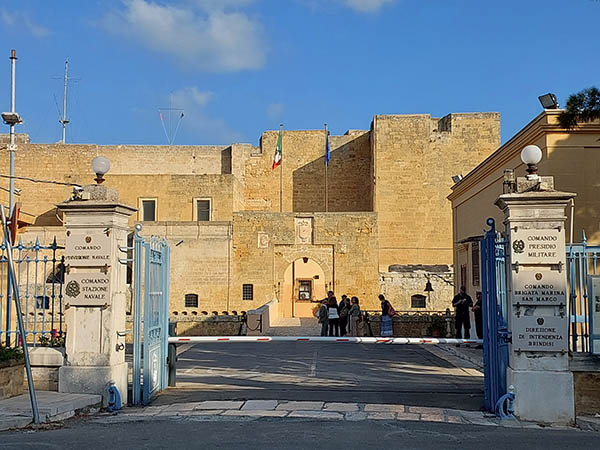
The Entrance to the castle
This location used to be a Norman Castle but
it lie in ruins when Holy Roman Emperor Frederick II built on top of it.
It was to serve as a military stronghold
and residence for the emperor and his troops.
Frederick II was a charismatic emperor from a
German dynasty also known as the Swabians, hence the name of the castle.

Billy and Akaisha in front of the moat at
the Swabian Castle
Over the centuries, the castle has been modified and expanded by various rulers.
There were the Aragonese rulers from
northeastern Spain who added an outer wall and moat during the 15th century to
strengthen the castle's defenses.
More currently, during the 19th and 20th centuries, the Italian Navy
used the castle as a base, and this castle is still an active military
stronghold.
During both
World
Wars, this castle functioned as a crucial naval base
for the Italian Navy. Gratefully, it avoided direct bombardment or damage during
these conflicts.

A better view of the moat and the various
types of stone to construct the castle
The base of the castle is made from the
durable and erosion-resistant yellow
Lecce
limestone.
Further up the walls a
volcanic rock called Tufo - formed from ash and debris - was used. It was
lighter in weight than the
Lecce
limestone so it was easier to transport.
In the interior, which you
don't see here yet, red bricks were used from nearby regions.
Around window frames and
decorative moldings is a purer white limestone to create contrast and intricate
carvings.
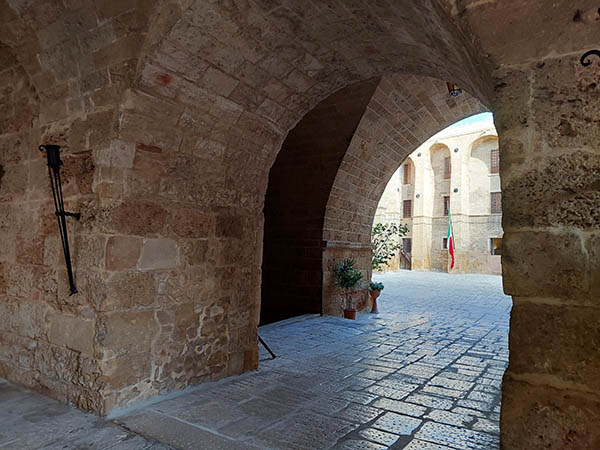
Inside the castle
We began the tour on time just at the
entrance of the castle. It was given in Italian, so we didn't know what the tour
guide was describing or the significance of most things inside the castle.
But a lone Naval officer - who could see our
confusion - sort of adopted us. Speaking broken English in a whisper from time
to time in order not to disturb the tour, we chatted about Italy, the US, and
the various wars our countries have found themselves in.
We told him we had gone to the
WWII
Beachhead museum in Anzio and also the military graveyard there just outside
of town. We made clear how much this history meant to us, as both of our Fathers
served in that war. He was most grateful for our recognition of the military's
sacrifices.
This photo shows you how thick the walls are
inside the castle.
The archways show the skill of the masonry
involved.
On the left of the first archway is an iron
gas torch used for lighting and towards the right in the photo you can see the
open courtyard in the center of the castle.

The courtyard
The courtyard was a wide open square space in
the center of the citadel.
The thick walls, archways and heaviness of
the stonework make a readily visible statement of the impregnability of this
castle.
The Italian flag is on a pole at the right.
The officer who sort of adopted us kept us
close by so we wouldn't go wandering off somewhere we weren't supposed to be.
Billy and he had a very respectful conversation together. These were memorable
moments in our tour.
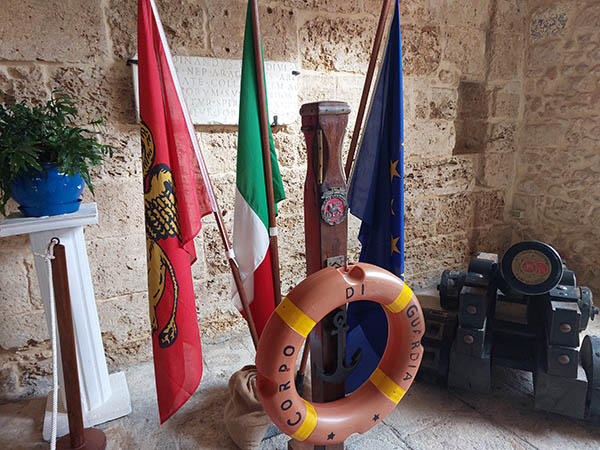
Various flags and naval equipment
On the left is a red flag with a yellow lion
and is the flag of the Italian Navy. The yellow lion is the symbol of the
Republic of Venice, which once had considerable influence in the region.
The center green, white and
red flag is the national flag of Italy, and the blue flag with the stars is the
flag of the European Union.
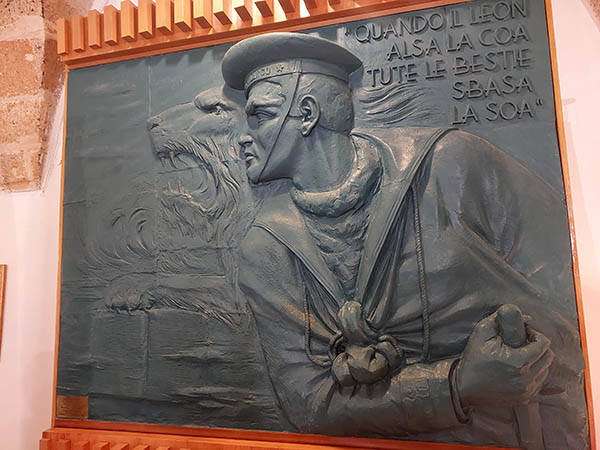
A lion and a navy man
We saw the symbol of the lion all throughout
the museum display.
This carving in Italian reads: "When the lion lifts his coat, all the beasts shed their hair"
which is their saying showing respect for and the power of the Italian Navy.
The lion, after all, is called the King of
Beasts.

Artifacts from the
Etna Ship
These are artifacts from the Naval ship Etna.
When Italy surrendered to the Allies in
September 1943 the hull of this ship was 53% complete.
Although this vessel and another one were
sabotaged before being captured by the Germans, some construction work was able
to be completed before abandoning the project.
The Etna was scuttled in Trieste harbor in
1945.
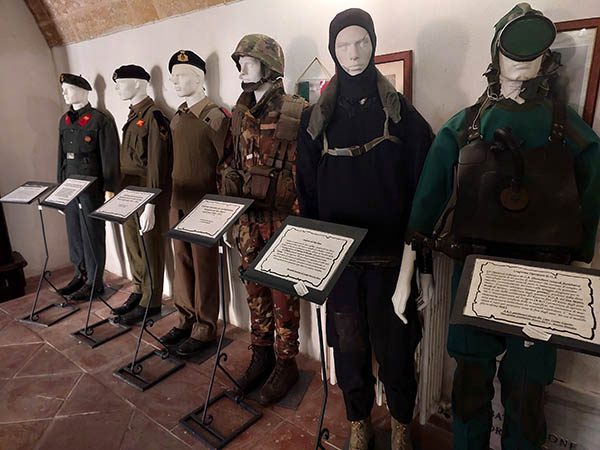
Various mannequins displaying military uniforms
The castle was turned into a penitentiary
before it was officially delivered to the National Marine in 1909.
It became the most important naval base
during WWI.
During WWII, for a short 6 months, the castle
became the residence of the King of Italy Vittorio Emanuele III. Here the
government was administrating and commanding, which made Brindisi the capital of
Italy for one year.

Military men and an officer
After the tour was over we all walked out
into the inside courtyard.
A Naval Officer is discussing something with
his men as we look on.
The officer came over to speak with us. His
English was excellent as he explained he has been involved with the US military
and NATO.
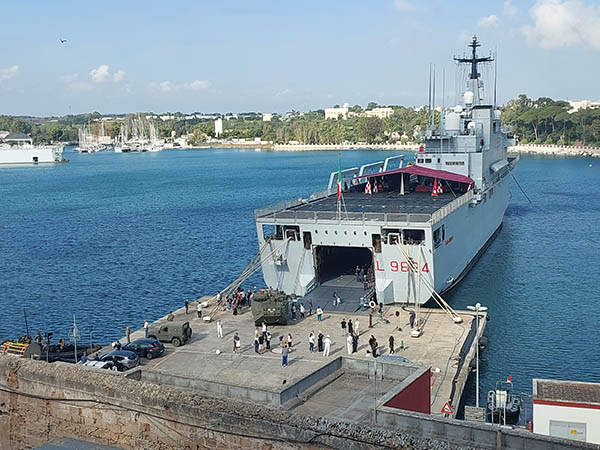
Navy ship in Brindisi Harbor
As we walked outside the castle, we looked
over the wall and saw that this Navy ship was conducting a tour.
Although we wanted to participate in the next
tour, apparently, that one was the last for the day.
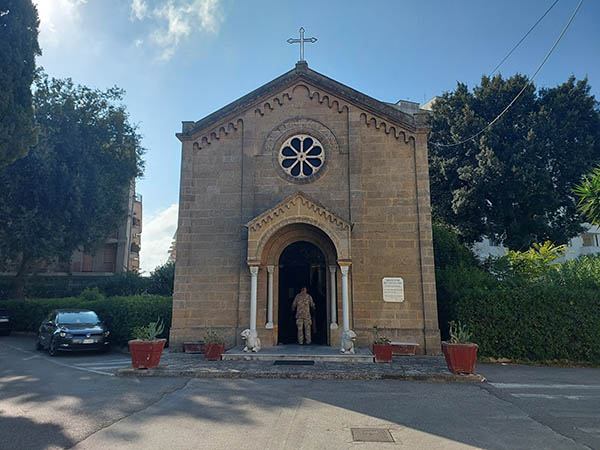
Outside the church of Beata Vergine Stella
Maris
Not far from the castle is this simple
church. It was originally built in the 12th century and stands on a scenic cliff
overlooking the Adriatic Sea, offering stunning views.
The tradition of blessing of the sea dates
back to 15th century Italy. It has since become a custom in coastal cities
throughout Europe and the United States.
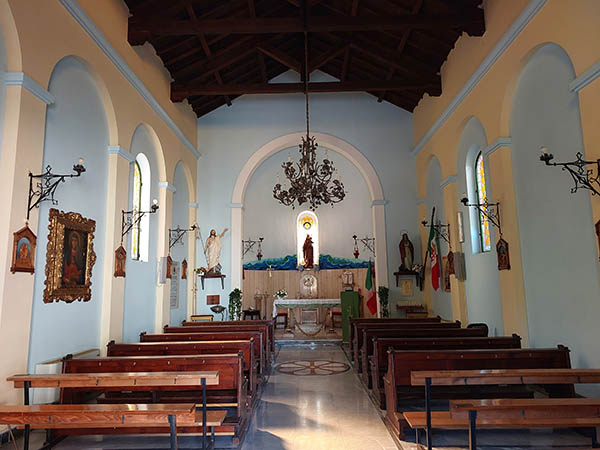
Inside the Church
For mariners and coastal communities, stars
were crucial navigational tools. In this way, Mary became associated with a
guiding light, leading people safely through the perils of life's "sea."
She is the patron saint of seafarers,
fishermen, coastal communities, and various other groups who seek her protection
and guidance.

Naval ship in
Brindisi Harbor
After visiting both the castle and the Church
of Mary, Star of the Sea, we came back to ground level and saw the navy ship
which was giving the tour.
Have you ever been on a Naval ship?
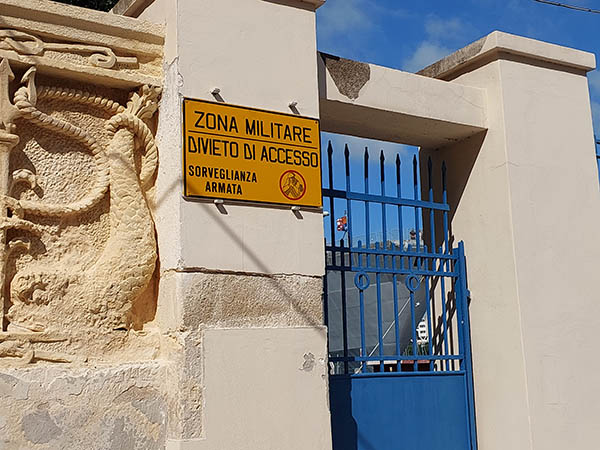
Outside locked gate
Brindisi's history and importance all relate
to its location on the sea.
The military of ancient peoples such as the
Romans and various invaders during the Medieval Ages have all utilized this
harbor for international trade and the protection of the Motherland.
If you are visiting Brindisi, take time to go
through the Swabian Castle and visit some functional history of the past.
__________
Swabian
Castle of Brindisi
Castello Svevo di Brindisi, Via dei Mille, 4,
Brindisi
For more stories, photos and videos of
Italy, click
here
For more on
Retirement Topics,
click here and
here

About the Authors



Retire
Early Lifestyle appeals to a different
kind of person – the person who prizes their
independence, values their time, and who doesn’t
want to mindlessly follow the crowd.
HOME
Book Store
Retire Early Lifestyle Blog
About Billy & Akaisha
Kaderli
Press
Contact
20 Questions
Preferred
Links
Retirement
Country Info
Retiree
Interviews
Commentary
REL
Videos
|